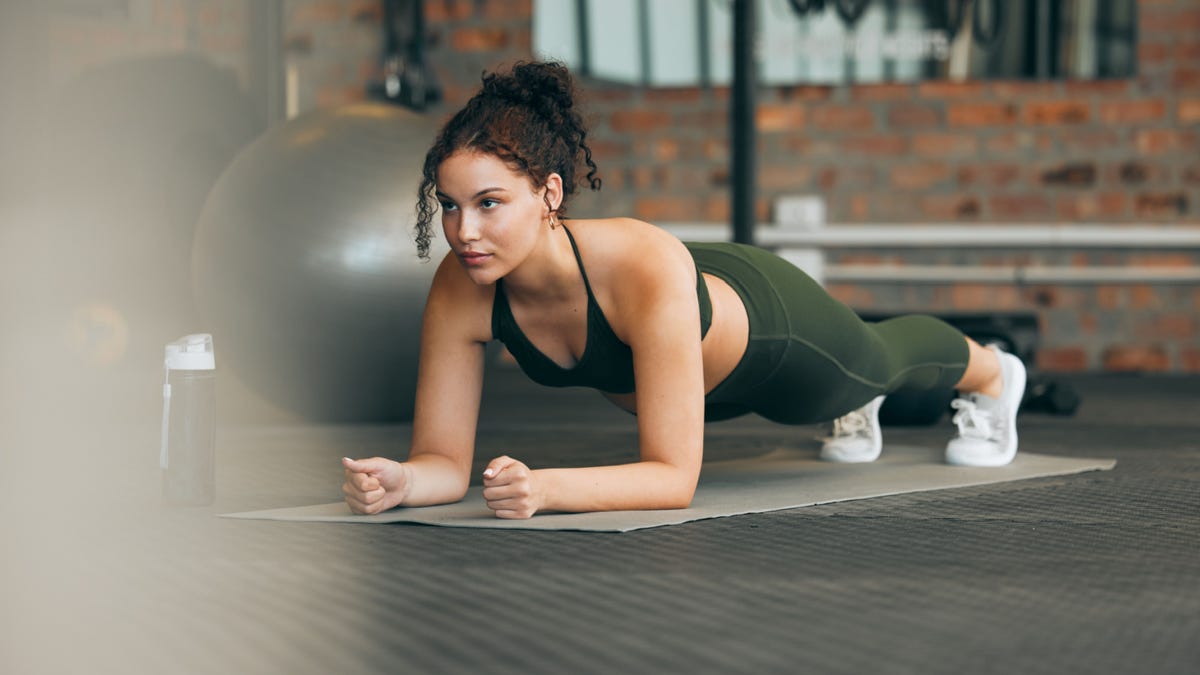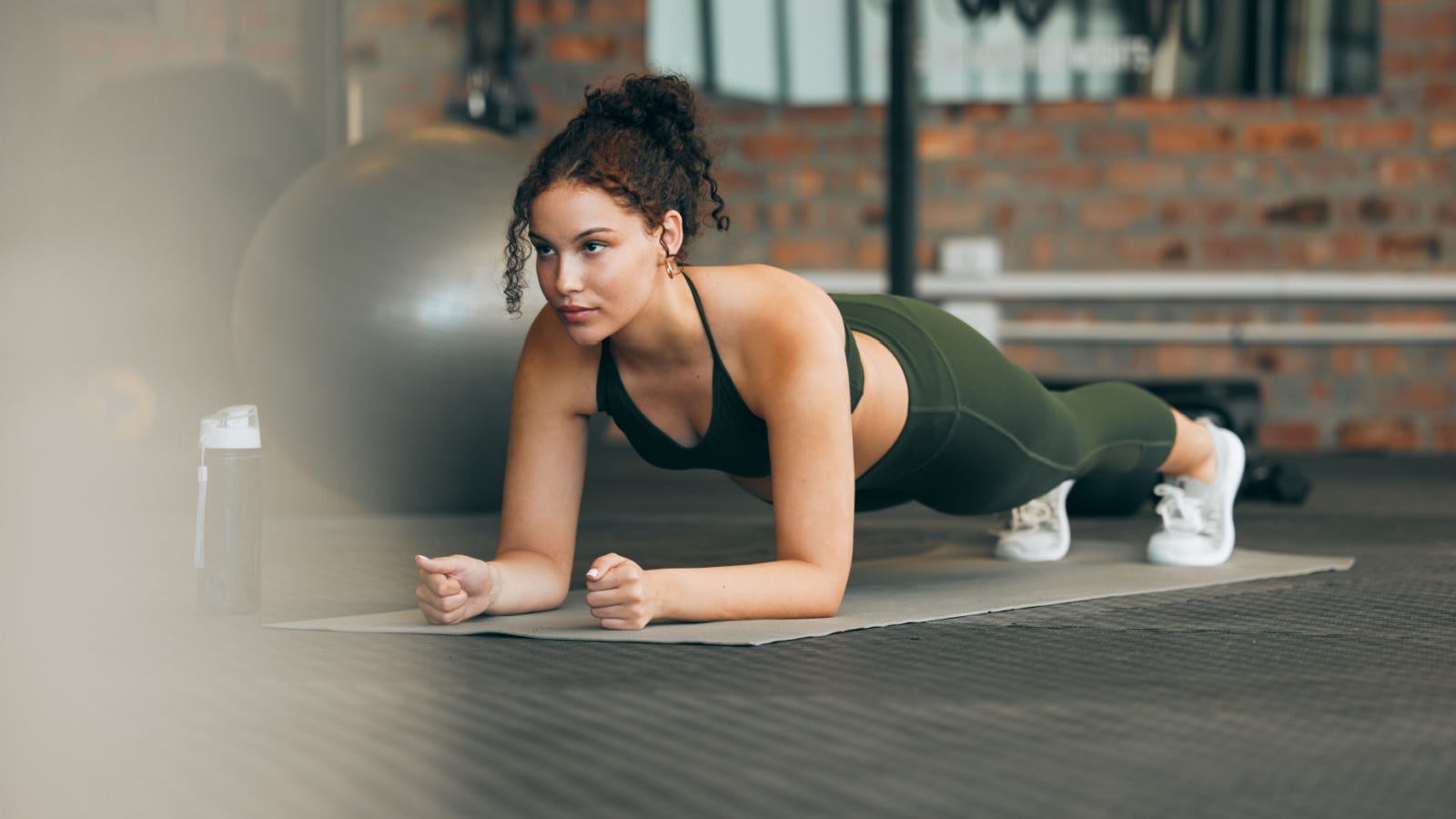
Not all of us can have a home gym. In fact, some of us don’t even have space for a set of dumbbells, and getting to the gym every day seems like a real chore. But that doesn’t mean you can’t have a great workout. Enter: bodyweight exercises.
If you are unfamiliar with bodyweight exercises, they allow people to use no equipment for their workout. For those with no time to hit the gym, no space to store gear, or no budget to buy gear, these exercises might be perfect.
What are bodyweight exercises?
Bodyweight exercises use strength, mobility and endurance workouts to condition your body without the use of props, weights or dumbbells. The only accessory you need is you and your mat or other comfortable surface.
Using the resistance of your body and gravity, along with correct positioning, these exercises provide effective resistance to train your body to gain strength, stability, and endurance.
Resistance is important in any exercise in order to load your bones, muscles, ligaments and tissues to be able to perform a range of daily functional movements, as well as more complex movements explored in sport and fitness.

What are the benefits of bodyweight exercises?

The most obvious benefit of a bodyweight exercise is its ability to condition the body on its own without equipment. Only your body is essential to perform the movement, making bodyweight exercise a more accessible form of purposeful movement.
According Harvard Health Publishing, bodyweight exercises are considered “more functional” than traditional training loaded with dumbbells and machines. In a more functional sense, they are exercises that more closely reflect the movements of everyday life.
For example, a side plank uses one shoulder and one side of your obliques to support this move and helps support tasks like picking up a bag. Meanwhile, traditional squats support everyday movements like picking up a heavy box or moving furniture by targeting your hamstrings and glutes.
Studies conducted by Harvard also found that bodyweight exercises were found to be “more effective” in increasing muscular endurance and aerobic capacity. Specifically, a 2014 study published in the International Journal of Sports Medicine found that muscular endurance and aerobic capacity gained through regular bodyweight exercise are associated with a decreased risk of cardiovascular disease.
From a long-term perspective, when performed regularly, movements from bodyweight exercises may also reduce the risk of developing conditions such as diabetes, obesity, cancer and Alzheimer’s disease. .

What are the best bodyweight exercises?

The following bodyweight exercises are handpicked to help you achieve different elements of a full body workout by targeting your deep core, shoulder strength, and hip stability. They are all simple, safe and rooted in the foundations of traditional yoga and pilates. Incorporating these exercises into your weekly movement routine will help you get stronger from the ground up.

Flying Quadruped Abs Burner
The Hovering Quadruped Abs Burner is a simple and effective exercise for strengthen all layers of your core, including your transverse abdominis muscle (your deepest layer of abdominal tissue), the middle two layers of your abdomen (your internal and external obliques), and the infamous rectus abdominis (your outermost layer of core tissue – otherwise known as your core “six pack abs”). This exercise also provides a great setup for engaging the tiny stabilizers along your spinal cord called the multifid (a small area of your body that plays a huge role in your inner core strength).
Finally, this exercise strengthens the shoulder girdle and attached muscles such as your trapezius, rhomboid major and minor (the muscles between your shoulder blades), latissimus dorsi, pectorals (your chest muscles), serratus anterior (the muscle under your armpit), deltoids, biceps, and triceps.
- Find a face-down position on all fours, placing your shoulders over your wrists or forearms and your knees under your hips.
- Make sure your spine is stacked in its neutral position with your shoulder girdle aligned with your pelvis. In other words, do your best to avoid dropping your pelvis or chest toward the floor.
- Spread your shoulder blades apart.
- Pull your navel towards your spine.
- On your next exhale, tuck your toes in and hover over your knees without changing the position of your spine.
Boards
- Return to your face down position on all fours by stacking your shoulders over your wrists and your knees under your hips.
- Lean your chest forward in front of your palms.
- Pull your navel towards your spine.
- To increase the work in your lower body, tuck your toes in and lift your legs to find a full plank position. Again, make sure your spine is level, with your shoulder blades pressed together and your hips aligned with your shoulders.
- Hold here for 30 seconds or 5-6 full breaths.
Tricep push-ups
Triceps pull-ups are derived from the movements of the yoga practice based on vinyasa. They target all of the muscles described in relation to the plank with an emphasis on the triceps or the underside of your arm.
- Return to the plank pose you found in the previous exercise (either with bent knees or a full plank).
- Pull your elbows toward your rib cage and begin lowering your chest toward the floor. Stop once your nose is about 1-2 inches off the floor.
- Lean into your full plank and repeat 5-10 times, taking breaks as you lose form.
Pro Tip: If your pelvis sags or your shoulder blades come together instead of steady and wide apart, that’s a good indication that you need to drop your knees and perform this exercise on your knees! You will still reap the full benefits of toning your triceps and shoulders, even in the kneeling variation.
Clams
This bodyweight exercise is derived from the fundamentals of mat pilates. It targets outer hip stability, specifically the gluteus medius, gluteus minimus, tensor fascia latae and iliotibeal band (IT band) otherwise known as the key components of our lateral frond of the muscle.
This exercise is especially useful for those who suffer from lower back or hip pain. Clam and heel workouts (the next and final exercise recommendation) are designed to relieve fatigue from the tiny ligaments and muscles in your lower back by strengthening the lateral musculature around the hip.
- Lie on your side with your knees slightly bent toward your chest.
- Stack your hips and shoulders.
- Extend the arm closest to the ground above you and use it as a place to rest your head.
- Place your top hand on the floor in front of you to make sure you keep your shoulders stacked.
- Raise your heels to the ceiling and flex them.
- Begin to open and close your top knee, keeping your heels sealed together.
- Only open your knee a little, by the time your hips move you are no longer targeting the right muscle group.
- Repeat 15-20 times or until you feel a significant burn in your side hip.
Heel workouts
This bodyweight exercise is an extension of the clam performed in Mat Pilates. It targets outer hip stability as well as the gluteus maximus (your largest glute muscle) and upper hamstrings.
- Stay in the side-lying position you found in your clam pose.
- The next time you open your knee, keep it lifted with your heels sealed together.
- Start driving (or moving) your heel up and down your shin, as if you were shaving your shin with your heel.
- Repeat 10-12 times, or until you feel a significant burn in your side hip.
